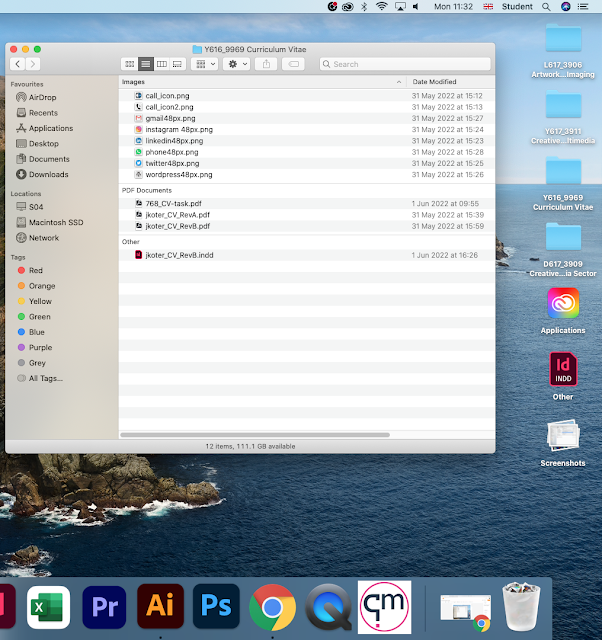How do creative industries work together?
"Starbucks: It Starts With You" - Starbucks promotional video spot on YouTube
https://www.youtube.com/watch?v=u3ybWiEUaUU [Access 7 June 2022]
Many creative professionals collaborate in the production of an advertising spot intended for a mass audience. This video advertisement was created for Starbucks, a multinational chain of coffee stores. The process of creating a video advertisement requires many specialised professionals to work together.
Video production generally consists of five stages: development, pre-production, production, post-production, and marketing & distribution. A number of individuals holding different roles are involved in the whole process: from the director(s), producers, scriptwriters, casting managers, and storyboard artists, to lighting specialists (who may be referred to as best boys, grips, and gaffers), sound recorders, camera operators, props and costume suppliers, makeup artists, to talent (actors) and editors. This video in particular required a lot of skilled editing to allow for the flawless transitions between different sequences that make the video looks funky and cartoon-like, whilst retaining realism.
The music and sounds in a video advertisement are also very important. The people responsible for making the video sound good, purposeful, and memorable include composers, musicians, music and sound editors, and mixing engineers.
The graphic conventions for colour schemes for materials related to Starbucks had previously been developed by the branding and design specialists working for Starbucks (whether in-house or in commission). The Starbucks logo, products (such as coffee bean packaging and crockery), and interior design also appear in the video. They had existed prior to the video's production, but they still had to have been designed and produced by the creative sector.
Finally, the video advertisement is posted on the streaming platform, in this case - on YouTube. From there, it can be distributed across the Internet. This is where marketing and digital/IT specialists play the crucial role.
RIBA (Royal Institute of British Architects) Journal
Producing a journal, whether printed or digital, requires different types of creative professionals to work together. Journalists and editors are generally responsible for the content of the journal. However, in the case of a specialised, professional journal such as the RIBA Journal, it is often professionals from the field (in this case, from the architectural field) that create the content in the form of articles, reports, and photojournalism. In the case of RIBA, other content such as architectural renders and floor plans is also appropriate. These are typically created by architecture practitioners. Illustrations and any other graphic elements may also be made by illustrators and digital artists.
Various roles in the journal are listed, divided into the editorial team, print production team, marketing team, and sales team. The editorial team involves the acting editor, acting deputy editor, acting managing editor, contributing editor, and publishing director.
Whether for print or digital distribution, the journal's content must be arranged on pages and converted into an appropriate format for printing or digital publishing. Editorial designers are responsible for the composition of text, image, and other elements on the page and the overall final look of the publication. Editorial design can be done e.g. in Adobe InDesign. The colour scheme of the magazine must be adjusted if the Journal is to go into print, as print publishing typically uses the CMYK colour mode, while digital publishing uses the RGB mode. This is also the responsibility of the editorial designer.
The sales & marketing teams are involved in promoting the sales of the Journal (the most emphasis is placed on monthly and annual subscriptions). The sales team includes the head of sponsorship and sales, account managers, and the advertising and digital support officer. Promotion and advertising can be done through social media, developing a good cross-platform content plan, native advertising (especially useful for specialised magazines), and other means. The marketing team also tracks and analyses previous marketing efforts and company data to figure out the efficient ways to market the Journal in the future.
The Witcher - books, video games, figures, and Netflix show
Many creative industry branches may work together within one thematic franchise. The Witcher started as a series of books written by Polish author Andrzej Sapkowski, who published the first novel in 1994. In 2001, a film adaptation of the book was released, and in 2002 - a TV show. Later, the books were adapted into a number of different media - from video games, to board games, an animated film, card games, and an American production of a TV show based on The Witcher, produced in cooperation with Netflix.
This example shows that fields within the creative industry do not exist in isolation, but rather they are always interacting, getting inspired by ideas from other fields with the possibility to transferring them into another field. The entire The Witcher franchise began with the author Andrzej Sapkowski, who then passed his written story onto book editors, publishers, and graphic designers. Soon enough, the story was passed onto the film and TV industry. (The roles involved in video production were already discussed in the Starbucks ad example). Later, the story was picked up by the video game industry, where game writers and narrative designers adapted it for the purposes of a game, and animators, digital artists, software developers, and computer programmers turned it into a playable, visually appealing game. The merchandise and figure industry also picked up the trend and produced many paraphernalia inspired by the characters in The Witcher universe.




Comments
Post a Comment